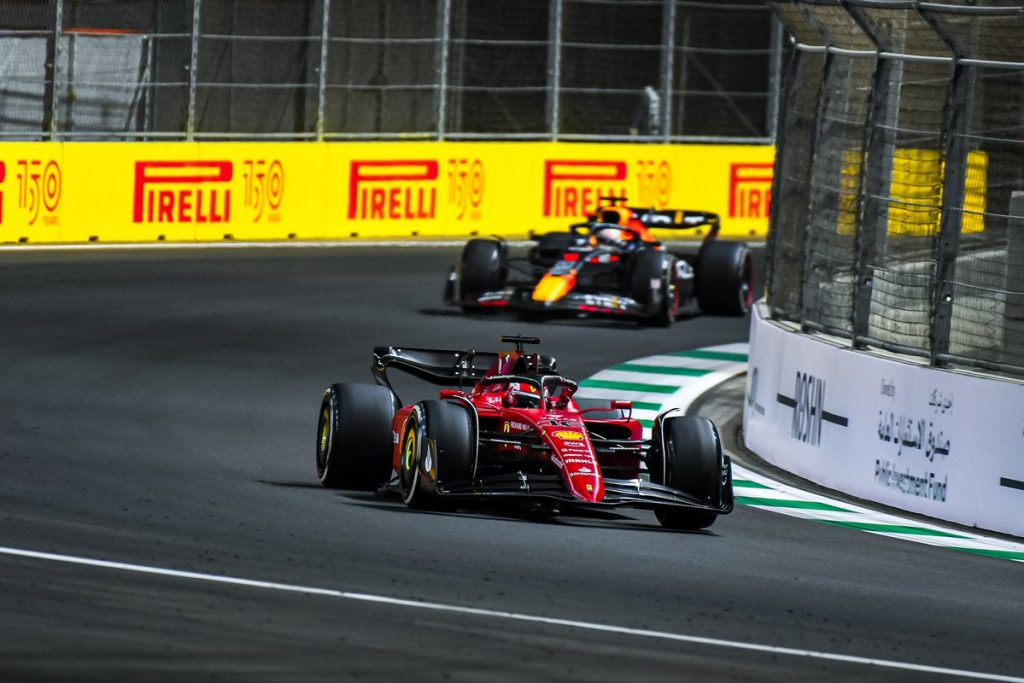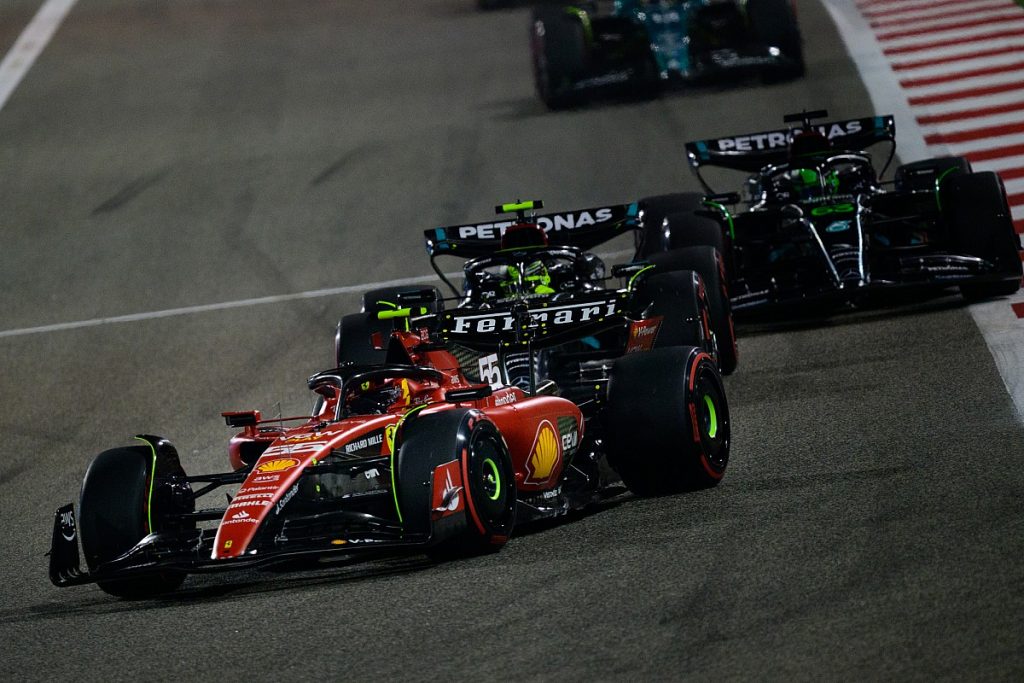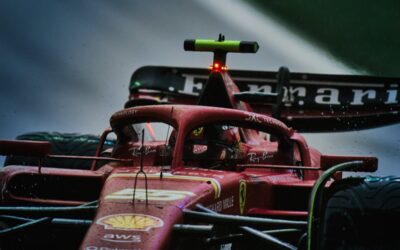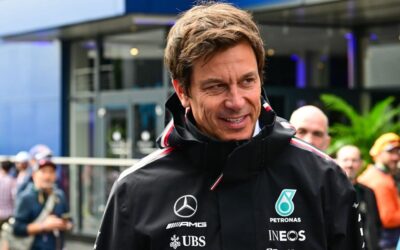The Bahrain Grand Prix 2023 was hardly a classic, with Max Verstappen dominating in truly impressive fashion. George Russell has already waved the white flag, suggesting the RB19 “should win every race” this season.
Despite this pessimistic outlook, there are still plenty of questions about how this weekend in Saudi Arabia will unfold, which could be more dynamic in terms of the fight for victory.
In this regard, some encouragement can be taken from the previous two races in Jeddah. In 2021, after Max’s mistake in Q3, there was another controversial incident between the Dutchman and Lewis Hamilton.
Last year, the battle between Red Bull’s Verstappen and Ferrari’s Leclerc made the Saudi GP a race to remember.
Ferrari: Porpoising trigger point limited SF-23 performance in Bahrain
Reliability remains a key area for the Scuderia. Ferrari worked hard on this issue during the winter, and their tests on the dyno were very encouraging.
Fred Vasseur has confirmed this, although the SF-23 of Charles Leclerc still ground to a halt at the season opener in Bahrain. More information will be forthcoming in the coming hours.

At Ferrari, the problems that emerged in Bahrain have been analysed and studied at the factory for more than a week now.
A lack of general performance, largely thanks to a lack of load on the SF-23, can be attributed to many aerodynamic and mechanical factors. In Maranello, the ideas on how and where to make changes are clear.
The gap to Red Bull is wide, although team principal Fred Vasseur has outlined that set-up choices limited the SF-23 and exaggerated the deficit to Red Bull.
The two problems that are limiting the SF-23 – as suspected during the tests – are exaggerated understeer and porpoising, which is triggered at lower speeds than Ferrari’s technicians expected.
In Bahrain, the team raced with the rear wing originally scheduled for the weekend – for medium loads – and more unloaded than the previous year’s F1-75. The single pylon wing was primarily used in practice for important data collection.

The simulation data showed that the SF-23 enjoyed more load, especially at low and medium speeds. The lack of correlation in Bahrain was largely due to how easily porpoising was triggered, preventing Ferrari from adopting much softer mechanical settings.
This gave the Maranello squad only two options. First, keep the SF-23 relatively low, generating load at high speeds from the floor whilst sacrificing braking and raising the car.
Alternately, the team could decrease the efficiency of the car with an increase in resistance to forward movement but achieve the benefit of being able to exploit softer set-ups.
A compromise was decided, albeit closer to the first option, so much so that the SF-23 proved to be very efficient and fast in high-speed sections.
However, in the medium and slow-speed corners, it was severely lacking in performance, something which was somewhat disguised with the soft tyres in qualifying. The team’s aerodynamic concept, for Vasseur, is not a problem:
“We believe in our concept, and that’s not our problem. Tire degradation can also be conditioned by a non-optimal setup. I have never seen a car go fast in qualifying and slow in the race because of a wrong concept,” said Fred Vasseur after round 1.
Ferrari: Jeddah should be a more favourable track – but will it be enough to close the gap to the RB19?
The next round of the World Championship, in Saudi Arabia’s Jeddah circuit, should be better suited with the characteristics of the new Ferrari SF-23, although some sections will still show the Scuderia’s limitations.
The first sector is suited to a strong front end, quite the opposite of what the SF-23 showed in Bahrain – the rest of the track, meanwhile, is rather fast and flowing. However, the issue of porpoising cannot be forgotten.
The second sector will still be favourable to the Italian car, as it was last year for the efficient RB18. The Ferrari F1-75 gained time in traction, although Red Bull was still able to recover, especially in DRS zones.

This season, at least based on the Bahrain GP, the roles seem to have reversed, with the SF-23 superior on the straight and the Red Bull RB19 performing better in the corners. The RB19 tends to lose ground from 280-300 km/h.
If Ferrari manages to capitalise on the improved efficiency of SF-23 on the straights, which will be tested in Jeddah, especially in qualifying, then Red Bull could face a bigger challenge than in Bahrain.
Not only will the circuit’s characteristics be different, but so will the asphalt. Sakhir is one of the toughest circuits in terms of tyre management due to its rough surface and its high number of traction zones.
“We’re going to race at a completely different track where there will be a lot more straights, more fast corners and a lot less wear. In Bahrain, we had a big lead while in Jeddah, I expect we will all be closer,” believes Max Verstappen.
These factors could bring the SF-23 closer to Red Bull, allowing them to extract more potential than seen in Bahrain. The question is whether it will be enough to fill the substantial gap that emerged in Sakhir.

Ferrari’s direct rivals, Aston Martin and Mercedes cannot be overlooked. The Aston Martin machine, which shocked the grid in Sakhir, excels at low-speed corners and in the braking zones whilst suffering more at high-speed corners and on the straights due to efficiency, which proved a weaker area in Bahrain.
However, this conclusion will have to be re-evaluated in Jeddah since the teams will bring very different set-ups and adaptations compared to two weeks ago.
Regarding Mercedes, the lack of aerodynamic load at high speeds could impact the W14’s bid to fight at the front in the second round. A series of updates should arrive on the ‘black’ cars as they try to take a small step forward with a car that hasn’t satisfied managers, technicians and drivers.
Authors: Piergiuseppe Donadoni & Paolo D’Alessandro
Translation: Jaden Diaz-Ndisang





